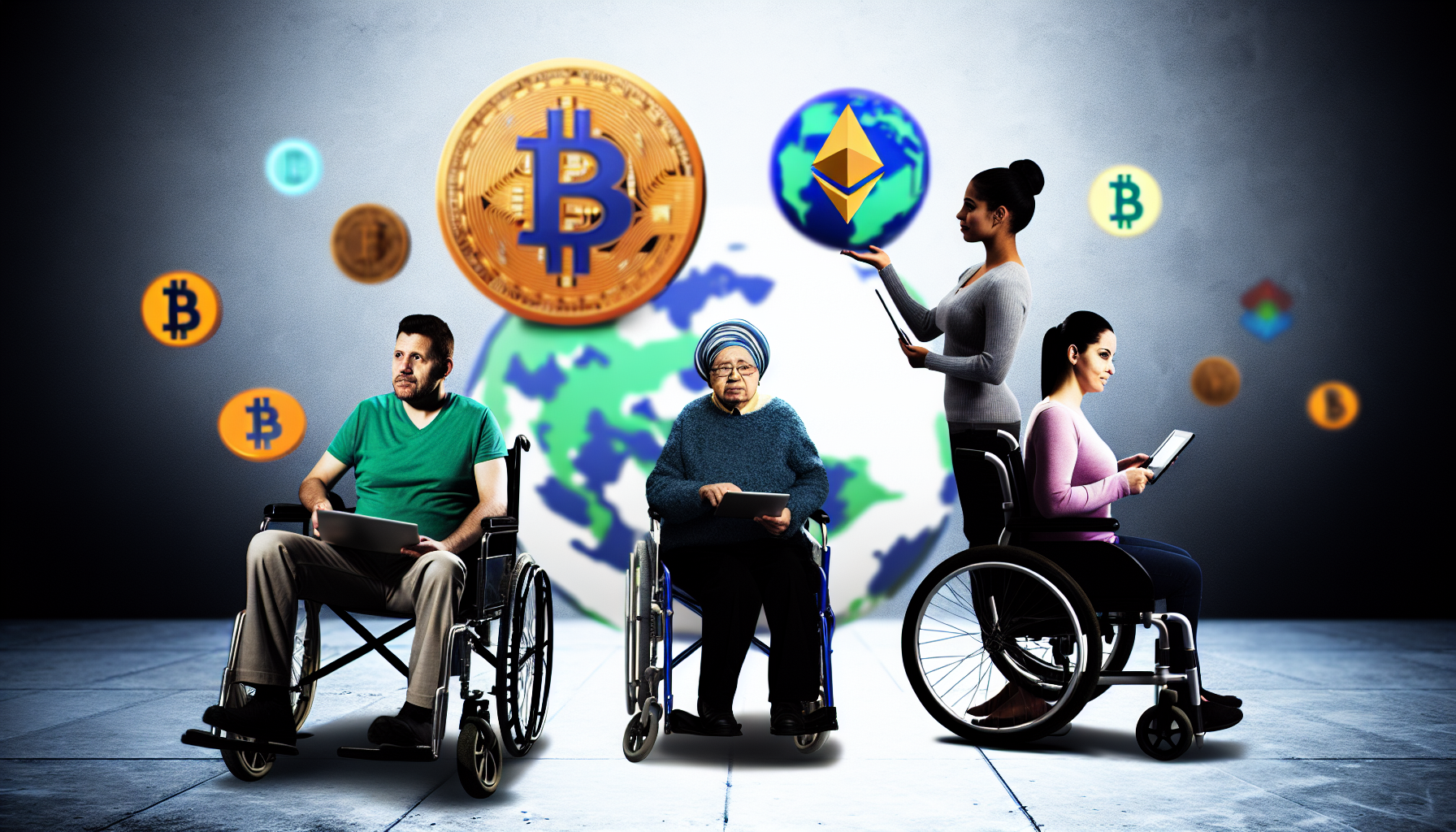Imagine a world where the clink of coins and the rustle of paper money are but echoes of the past, supplanted by the digital hum of cryptocurrency transactions. As fantastical as it may seem, for the disabled community, cryptocurrencies are not just futuristic abstractions but tangible instruments of empowerment. Our society is on the cusp of a grand financial evolution, and individuals with disabilities stand to reap undeniable benefits in this crypto-centric world.
In today’s article, we explore how cryptocurrency is shattering constraints and creating inclusive pathways for people with disabilities. Traditional banking systems, with their physical structures and challenging interfaces, often pose unintended hindrances. Conversely, digital currencies, through their nature, offer ease of access and eliminate many such obstacles. Let’s delve into how this financial renaissance is unlocking new potentials.
Financial Independence Reimagined
Firstly, cryptocurrencies make financial management more accessible and autonomous. For those hindered by mobility issues or sensory impairments, conducting transactions from the comfort of home via a computer or smartphone is not just convenient; it’s liberating. The disability community can interact with their finances on their terms, which is both empowering and tactically significant.
Disabling the Barriers
Smart contracts underpinning cryptocurrencies hold special promise. They are self-executing contracts with the agreement directly written into code, which can be especially beneficial for those who face challenges in understanding complex legal financial documents. Smart contracts enable transparent, secure, and immediate agreements without the necessity for intermediaries, leveling the playing field for individuals who often rely on others to facilitate such interactions.
Universal Design in Digital Currency
The principle of universal design – the design of products and environments to be usable by all people – is an inherent part of cryptocurrency interfaces. Wallet apps frequently incorporate features conducive to assistive technologies, such as screen readers or voice commands. This embracement of inclusivity represents a marked protraction from traditional financial tools that have not been universally accessible.
As cryptocurrencies continue to infiltrate everyday life, transactions become seamlessly inclusive. Picture the disabled artist receiving payments in Bitcoin for their digital artwork or the visually impaired individual trading altcoins on an exchange with an audio-guided interface – these are no longer speculative scenes but the real tapestry of today’s market.
Empowerment through Education
However, the march toward inclusion isn’t without its challenges. Disability often correlates with lower socioeconomic status and less access to education, which can be impediments to understanding the still-complex world of cryptocurrencies. Therefore, educational initiatives tailored to various abilities are paramount in ensuring that cryptocurrencies are truly a tool for everyone.
Organizations are arising at the intersection of crypto-financial services and disability support, providing customized resources and learning materials. This nurturing environment enables individuals to gain confidence and competence in utilizing digital currencies for their needs.
Looking Ahead: Policy and Potential
On the policy front, governments are starting to recognize the need for regulations that support this digital transition, especially as it pertains to the disability community. There is a growing recognition that as we build a crypto society, it must be done with an eye toward equitable access and opportunities for all citizens.
A full crypto society must remember not to repeat the mistakes of legacy financial systems. As we’ve seen in the creative nuances of film financing and the beauty industry, cryptocurrency can both challenge and enhance traditional sectors. Therefore, the disabled community must be actively included in creating policies, thus ensuring that these digital financial systems are built on foundations of inclusivity and universal accessibility.
In conclusion, cryptocurrencies are providing pathways to independence and agency for people with disabilities that were previously unimaginable. While challenges remain in the form of education and regulatory clarity, the progress is palpable. The future seems hopeful—where barriers once stood, doors to a financially inclusive world are now opening.
